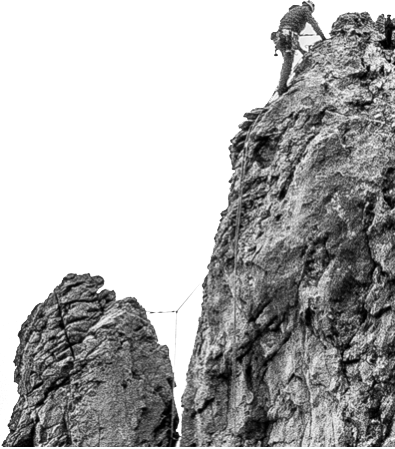Autopsychotherapy is the process of education-of-oneself under conditions of increased stress, as in developmental crises, in critical moments of life, in neuroses and psychoneuroses.
Autopsychotherapy is an indispensable component of the dynamism education-of-oneself. This is so because before the individual can reach secondary integration he experiences various inner disturbances and conflicts. These conflicts occur not only in relation to the external environment but also in the inner milieu. Although we recognize that these conflicts have a positive side to them insofar as they result in the development of personality, still the individual has to cope with them. The ability to cope with such conflicts constitutes the dynamism of autopsychotherapy.
As man’s development comes closer to secondary integration, conflicts that would earlier produce neurotic and psychoneurotic symptoms are dealt with by the dynamism of autopsychotherapy in such a way that these very conflicts become the creative medium of self-perfection.
—Dabrowski, 1970, p. 76
Apollo 13 is my favorite movie. It’s based on an amazing true story; its screenplay is masterfully crafted; the soundtrack is powerful. We chose the movie’s end titles as the musical backdrop for the bridal party’s entry at our wedding. (Here, have a listen! Epic, right?) And, naturally, I can quote several scenes for your (or maybe only my) entertainment.
There’s this one, for example, where some journalists describe the challenge the crew faces as they prepare to re-enter Earth’s atmosphere. “The re-entry corridor is in fact so narrow,” say the journalists, “that if this basketball were the Earth, and this softball were the Moon, and the two were placed fourteen feet apart, the crew would have to hit a target no thicker than this piece of paper.”
The reason I’m quoting this scene right here and right now, of course, is that it strikes me as a great metaphor for life with overexcitability. Imagine that your life is essentially a series of spaceflights, each culminating in a landing. Each time, you face this challenge: if you come in too steep, atmospheric friction will cause you to burn up with overstimulation and anxiety. If your angle is too shallow, you’ll deflect yourself off the top and go careening into the cold depression of deep space.*
[*Well, actually, the Apollo 13 screenplay is a touch overdramatic here. According to a European Space Agency (ESA) blog post, you’d simply miss your re-entry and have to go around again, but this would still mess things up and cause problems that you really don’t want.]Here’s the point: because you are so very stimulable, the difference between those things is often no thicker than that sheet of paper.

Fortunately, the metaphor only extends so far. Unlike the for the crew of Apollo 13, missing this target isn’t a death sentence. If you come in too steep and burn yourself to a crisp, you can still perform a phoenix-like reassembly. If, despite what the ESA says about deflecting, you still manage to end up sailing off toward Jupiter, some mental and emotional work can still bring you safely back to Earth. The way to correct your course and hit your target is by developing a skill that the theory of positive disintegration (TPD) calls autopsychotherapy. Autopsychotherapy is considered one of the dynamisms because it’s a force for self-transformation.
See, as you may remember, it’s true that the five forms of overexcitability (OE)—intellectual, imaginational, sensual, psychomotor, and emotional—are disintegrative forces. We can’t emphasize enough that, as much as we celebrate them, it’s not easy to live with them. On the other hand, we’d argue that you need overexcitability to become a metaphorical astronaut in the first place. OE, you see, is a first-rate oxidizer for your rocket fuel. It’s what gets you into orbit. It gives you the capacity to do big things; and it often comes with a sense of mission to match. (Those “big things” and that “mission” might not look like traditional “success,” of course, but that’s a digression worthy of a whole separate article.)
The first issue is learning how to handle this highly energetic fuel without blowing things up. Unfortunately, this isn’t something most people are prepared to teach you, not being astronauts themselves. That’s why you have to do a lot of it yourself.
Personally, I feel like I spent my teen years in a flight simulator, struggling with strong G forces that other people didn’t understand. (Picture that scene where Jack Swigert keeps burning up in the flight simulator after being named to the mission at the last minute. “10 Gs. We’re burning up. We’re dead.”) Back then, I was prone to intense spells of gloom and loneliness. Rather than risk burning up in the toxic social environment of a suburban high school, I would err toward the shallow angle, perpetually circling the Earth, never landing safely. In fact, I missed my planned landing site entirely—by going to study and live abroad. That experience provided a strange mix of both under- and over-stimulation. I was, after all, far from home and didn’t know anyone, but everything was fascinating and challenging. It was excellent astronaut training, though sometimes miserable.
And then there’s the fact that simply mastering the safe handling of your OE rocket fuel isn’t necessarily enough to succeed with your mission. You still have to learn how to harness and channel that fuel. And on this note, it may well be that virtually no one will be able to teach you. You’ve got to do it yourself, because your overexcitable mission is probably something no one’s yet done. (You’ve “got to find a way to make this fit into the hole for this using nothing but that.”)

Nowadays, I still experience bouts of depression or anxiety in the form of understimulated disconnection and overstimulated agitation, as do the majority of my abstract-intense friends. These spells are generally neither bad enough nor long enough to merit labeling clinically. They’re part of the human experience—a part that, like pretty much everything else, is amplified by overexcitability. While over- and under-stimulation are common to everyone, most people are driving cars, captaining boats, or perhaps flying jets. They’re not piloting spacecraft. And when you’re in orbit, even tiny particles of debris are hugely dangerous. (Recalling that kinetic energy = 1/2mv2, even a cubic centimeter of debris, moving with the velocity that you overexcitable astronauts deal with, can destroy your spaceship.)
Getting Back Down to Earth
So how do we do this autopsychotherapy thing? It’s all about reading the many, many gauges on your craft’s instrument panel.
The first lesson of autopsychotherapy is this: being anxious or depressed, over- or under-stimulated, indicates that something is off. Feelings of nervousness, irritability, sadness, and somatic distress are flashing lights on that instrument panel. They tell yourself that you’re coming in too steep or too shallow, or that your CO2 levels are rising. A basic need is probably not being met, such as for good nutrition, exercise, or positive and meaningful social contact. It might also be that, having satisfied the lower needs, those instruments are signaling that you should now try to meet higher ones—those dictated by your unique mission—but that you haven’t realized it yet.
Feelings of nervousness, irritability, sadness, and somatic distress are your spaceship’s instrument panel. They alert you that you’re coming in too steep or too shallow.
And sometimes, we’re just not very good at reading those instrument panels, because we don’t pay attention and put all the different signals together. I actually got a lesson in this the last time I watched Apollo 13. I happened to be taking a meditation class at the time, and our assignment that week was to pay attention to the signals our body was sending. During the re-entry scene, when everyone back on Earth is waiting to see if the astronauts come out of radio blackout, I noticed my heart was absolutely pounding. Clearly, some part of my body was concerned that they would not make it this time. It didn’t matter a bit that I’d seen the movie many times before. Each time the drama ramps up, I wonder again: will the astronauts survive this time? Though my rational brain knows that they will, the emotions that fuel my nervous system’s response are not totally sure, and prepare me for disaster just in case. It really drove home the lesson about the value of mindfully observing the body’s reactions.
Recognizing those thoughts and feelings is the first step. And of course, that’s the easy part. The hard part is figuring out a plan for what you can do to address them—and then successfully implementing that plan. The plan might include temporary stop-gap measures; it might involve moderate alterations designed to change habits; occasionally it will demand big changes in your life. Big changes merit their own articles, and I and other Third Factor authors have some of those stories in store for you in future issues.
For now, here’s a small one to serve as an example. Recently, my somatic instrument panel informed me that, to my surprise, I was coming in too shallow. As a self-employed writer living my dream, I thought I had totally won at astronauting. But the panel was flashing. I was clearly at risk of missing my re-entry and maybe even deflecting into space. What could be wrong?
It took a while to realize that it was linked to the fact that I spend so much time staring at a screen, communicating with people via keyboard. Yes, this is related to doing what I want to be doing. But doing something we love doesn’t prevent us from getting out of balance. When the emails I used love receiving just started seeming like an endless pile, I realized I needed to get away from the abstract world of digital communications and the dopamine hits of the Internet and be in the concrete world. So I said to my husband Max (who is some days the only concrete person I see, since I work from home) that I wanted to get out into nature.
We went kayaking. It was wonderful. Suddenly, not only had the warning light stopped flashing, but I felt content, even healthy.

Back in high school, I probably wouldn’t have figured that out. I guess I’ve gotten better as a pilot.
Now, as much as I recommend a nice leisurely ride down a forested river if you’re feeling lost, that is of course not necessarily the proper adjustment to your current flight trajectory. There are plenty of simplistic articles out there that list a bunch of potential solutions to the blues. And they’re usually decent things to try. What they usually skip is the practice it takes to determine which solution fits each contingency. Disintegrations are complex. We generally don’t disintegrate because just one thing is wrong, unless it’s one big thing that we have no clue how to fix. Learning to pilot your spacecraft in these sorts of highly complex situations is key to your success as an astronaut. When you’re re-entering Earth’s atmosphere, you have a lot that’s affecting you. And that target you’re aiming for is no thicker than that sheet of paper.
Piloting a spaceship is never going to be simple. But you’re an astronaut. And to paraphrase flight director Gene Krantz, this may well be your finest hour.
(You may have emotional overexcitability if this sequence chokes you up every single time.)




